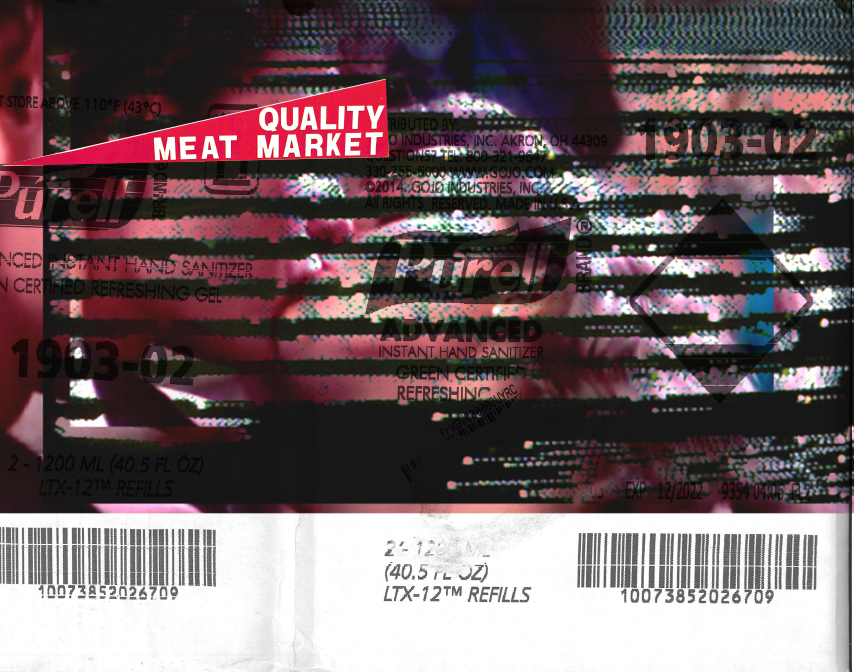

Serendipity 16 MAY 2020
д»ҠгҒӢгӮү28е№ҙеүҚгҒ®1992е№ҙ
еғ•гӮүгҒҜгҖҒ
еҸӨжң¬еұӢгҒ§жө·еӨ–гҒ®йӣ‘иӘҢгӮ’д»•е…ҘгӮҢгҒҰгҒҜеҶҷзңҹгӮ’еҲҮгӮҠиІјгӮҠгҒ—гҖҒгӮігғ”гғјж©ҹгӮ’дҪҝгҒЈгҒҰгӮігғ©гғјгӮёгғҘгӮ’е§ӢгӮҒгҒҹгҖӮ
гҒқгӮҢгҒҢе…ғгҒ§гӮ·гғ«гӮҜгӮ№гӮҜгғӘгғјгғігғ—гғӘгғігғҲгҒ®TгӮ·гғЈгғ„дҪңгӮҠгҒҢе§ӢгҒҫгҒЈгҒҹгҖӮ
жӣ°гҒҸгҖҢгӮігғ©гғјгӮёгғҘгҒЁгҒҜгҖҒгҒӮгӮҠгҒЁгҒӮгӮүгӮҶгӮӢжҖ§иіӘгҒЁгғӯгӮёгғғгӮҜгҒ®гғҗгғ©гғҗгғ©гҒӘзҙ жқҗ
пјҲж–°иҒһгҒ®еҲҮгӮҠжҠңгҒҚгҖҒеЈҒзҙҷгҖҒжӣёйЎһгҖҒйӣ‘еӨҡгҒӘзү©дҪ“зӯүпјүгӮ’зө„гҒҝеҗҲгӮҸгҒӣгӮӢеүөдҪңжҠҖжі•гҒ§гҒӮгӮӢгҖҚ
гӮ«гғғгғҲгӮўгғігғүгғҡгғјгӮ№гғҲгӮ’й§ҶдҪҝгҒ—гҒҹгӮігғ©гғјгӮёгғҘгӮ’еҺҹдҪ“йЁ“гҒ«жҢҒгҒӨFPARгҒ§гҒҜгҖҒ
йӣ‘иӘҢзӯүгҒ®еҲҮгӮҠжҠңгҒҚгҒ®д»–гҒ«гӮҝгӮ°гҖҒгғ¬гӮ·гғјгғҲгҖҒгғҒгӮұгғғгғҲгҖҒгғ‘гғғгӮұгғјгӮёгҒӘгҒ©гҒ®еҚ°еҲ·зү©гӮӮгғһгғҶгғӘгӮўгғ«гҒЁгҒӘгӮӢгҖӮ
ж—Ҙеёёз”ҹжҙ»гҒ«гҒҠгҒ„гҒҰгҒҜиӘ°гӮӮгҒҢж°—гҒ«з•ҷгӮҒгӮӢгҒ“гҒЁгӮӮгҒӘгҒ„гҖҒ
з”ЁгҒҢжёҲгӮҒгҒ°гӮҙгғҹз®ұиЎҢгҒҚгҒ®гӮӮгҒ®гҒ§гҒӮгӮӢгҖӮ
NYгҒ§дҪҝз”ЁгҒ—гҒҹең°дёӢйү„гҖҢMTAгҖҚгҒ®гӮ«гғјгғүгҖҒи·Ҝз·ҡеӣігҖҒ
гӮӨгӮҝгғӘгӮўгҒӢгӮүеұҠгҒ„гҒҹеӣҪйҡӣйғөдҫҝгҒ®дҪҝз”ЁжёҲгҒҝгӮ№гӮҝгғігғ—гҖҒ
иҖҒиҲ—гғҖгғігӮ№гӮҜгғ©гғ–гҒ®гғһгғғгғҒз®ұгҖҒ
еӣҪйҡӣе®…жҖҘдҫҝгҖҢFedExгҖҚгҒ®AWBгҖҒ
гӮӨгғігӮ№гӮҝгғігғҲгӮ«гғЎгғ©з”ЁгҒ®гғ•гӮЈгғ«гғ еүқйӣўзҙҷгҖҒ
ж§ҳгҖ…гҒӘжўұеҢ…иіҮжқҗгҒӘгҒ©гҖӮ
гҒқгӮҢгҒһгӮҢгҒ«гҒҜгҖҒжҷӮд»ЈгӮ„з”ЁйҖ”гҒ«гӮҲгӮҠгғ•гӮ©гғјгғһгғғгғҲеҢ–гҒ•гӮҢгҒҰгҒҚгҒҹгғҮгӮ¶гӮӨгғігҒҢгҒӮгӮҠгҖҒ
е·ҘжҘӯзҡ„гҒ§жҸәгӮӢгҒҺгҒӘгҒ„жҷ®йҒҚжҖ§гӮ„жұҺз”ЁжҖ§гҒҢеӮҷгӮҸгҒЈгҒҰгҒ„гӮӢгҖӮ
еӣҪзұҚгӮӮз”ЁйҖ”гӮӮеҜёжі•гӮӮж§ҳгҖ…гҒ гҒҢгҖҒ
гғ•гӮЎгӮӨгғ«гҒ«дҝқз®ЎгҒ•гӮҢгҒҹгӮёгғЈгғігӮҜгҒҢеүөдҪңгҒ®гғһгғҶгғӘгӮўгғ«гҒЁгҒ—гҒҰжҙ»гҒӢгҒ•гӮҢгӮӢгҖӮ
гӮ«гғғгғҶгӮЈгғігӮ°гӮ„гғ¬гӮӨгғӨгғӘгғігӮ°гӮ’з№°гӮҠеҮәгҒ—гҒӘгҒҢгӮүгҖҒ
гғЎгғғгӮ»гғјгӮёгӮ’зҜүгҒҚдёҠгҒ’гӮӢгҖӮ
гғЎгғҮгӮӨгӮўгӮІгғӘгғ©гҖӮ
гӮӯгғЈгғігғҗгӮ№гҒҜз„ЎйҷҗгҒ«еәғгҒҢгҒЈгҒҰгҒ„гӮӢгҖӮ
еғ•гӮүгҒҜгҖҒ
еҸӨжң¬еұӢгҒ§жө·еӨ–гҒ®йӣ‘иӘҢгӮ’д»•е…ҘгӮҢгҒҰгҒҜеҶҷзңҹгӮ’еҲҮгӮҠиІјгӮҠгҒ—гҖҒгӮігғ”гғјж©ҹгӮ’дҪҝгҒЈгҒҰгӮігғ©гғјгӮёгғҘгӮ’е§ӢгӮҒгҒҹгҖӮ
гҒқгӮҢгҒҢе…ғгҒ§гӮ·гғ«гӮҜгӮ№гӮҜгғӘгғјгғігғ—гғӘгғігғҲгҒ®TгӮ·гғЈгғ„дҪңгӮҠгҒҢе§ӢгҒҫгҒЈгҒҹгҖӮ
жӣ°гҒҸгҖҢгӮігғ©гғјгӮёгғҘгҒЁгҒҜгҖҒгҒӮгӮҠгҒЁгҒӮгӮүгӮҶгӮӢжҖ§иіӘгҒЁгғӯгӮёгғғгӮҜгҒ®гғҗгғ©гғҗгғ©гҒӘзҙ жқҗ
пјҲж–°иҒһгҒ®еҲҮгӮҠжҠңгҒҚгҖҒеЈҒзҙҷгҖҒжӣёйЎһгҖҒйӣ‘еӨҡгҒӘзү©дҪ“зӯүпјүгӮ’зө„гҒҝеҗҲгӮҸгҒӣгӮӢеүөдҪңжҠҖжі•гҒ§гҒӮгӮӢгҖҚ
гӮ«гғғгғҲгӮўгғігғүгғҡгғјгӮ№гғҲгӮ’й§ҶдҪҝгҒ—гҒҹгӮігғ©гғјгӮёгғҘгӮ’еҺҹдҪ“йЁ“гҒ«жҢҒгҒӨFPARгҒ§гҒҜгҖҒ
йӣ‘иӘҢзӯүгҒ®еҲҮгӮҠжҠңгҒҚгҒ®д»–гҒ«гӮҝгӮ°гҖҒгғ¬гӮ·гғјгғҲгҖҒгғҒгӮұгғғгғҲгҖҒгғ‘гғғгӮұгғјгӮёгҒӘгҒ©гҒ®еҚ°еҲ·зү©гӮӮгғһгғҶгғӘгӮўгғ«гҒЁгҒӘгӮӢгҖӮ
ж—Ҙеёёз”ҹжҙ»гҒ«гҒҠгҒ„гҒҰгҒҜиӘ°гӮӮгҒҢж°—гҒ«з•ҷгӮҒгӮӢгҒ“гҒЁгӮӮгҒӘгҒ„гҖҒ
з”ЁгҒҢжёҲгӮҒгҒ°гӮҙгғҹз®ұиЎҢгҒҚгҒ®гӮӮгҒ®гҒ§гҒӮгӮӢгҖӮ
NYгҒ§дҪҝз”ЁгҒ—гҒҹең°дёӢйү„гҖҢMTAгҖҚгҒ®гӮ«гғјгғүгҖҒи·Ҝз·ҡеӣігҖҒ
гӮӨгӮҝгғӘгӮўгҒӢгӮүеұҠгҒ„гҒҹеӣҪйҡӣйғөдҫҝгҒ®дҪҝз”ЁжёҲгҒҝгӮ№гӮҝгғігғ—гҖҒ
иҖҒиҲ—гғҖгғігӮ№гӮҜгғ©гғ–гҒ®гғһгғғгғҒз®ұгҖҒ
еӣҪйҡӣе®…жҖҘдҫҝгҖҢFedExгҖҚгҒ®AWBгҖҒ
гӮӨгғігӮ№гӮҝгғігғҲгӮ«гғЎгғ©з”ЁгҒ®гғ•гӮЈгғ«гғ еүқйӣўзҙҷгҖҒ
ж§ҳгҖ…гҒӘжўұеҢ…иіҮжқҗгҒӘгҒ©гҖӮ
гҒқгӮҢгҒһгӮҢгҒ«гҒҜгҖҒжҷӮд»ЈгӮ„з”ЁйҖ”гҒ«гӮҲгӮҠгғ•гӮ©гғјгғһгғғгғҲеҢ–гҒ•гӮҢгҒҰгҒҚгҒҹгғҮгӮ¶гӮӨгғігҒҢгҒӮгӮҠгҖҒ
е·ҘжҘӯзҡ„гҒ§жҸәгӮӢгҒҺгҒӘгҒ„жҷ®йҒҚжҖ§гӮ„жұҺз”ЁжҖ§гҒҢеӮҷгӮҸгҒЈгҒҰгҒ„гӮӢгҖӮ
еӣҪзұҚгӮӮз”ЁйҖ”гӮӮеҜёжі•гӮӮж§ҳгҖ…гҒ гҒҢгҖҒ
гғ•гӮЎгӮӨгғ«гҒ«дҝқз®ЎгҒ•гӮҢгҒҹгӮёгғЈгғігӮҜгҒҢеүөдҪңгҒ®гғһгғҶгғӘгӮўгғ«гҒЁгҒ—гҒҰжҙ»гҒӢгҒ•гӮҢгӮӢгҖӮ
гӮ«гғғгғҶгӮЈгғігӮ°гӮ„гғ¬гӮӨгғӨгғӘгғігӮ°гӮ’з№°гӮҠеҮәгҒ—гҒӘгҒҢгӮүгҖҒ
гғЎгғғгӮ»гғјгӮёгӮ’зҜүгҒҚдёҠгҒ’гӮӢгҖӮ
гғЎгғҮгӮӨгӮўгӮІгғӘгғ©гҖӮ
гӮӯгғЈгғігғҗгӮ№гҒҜз„ЎйҷҗгҒ«еәғгҒҢгҒЈгҒҰгҒ„гӮӢгҖӮ
28 years ago, in 1992, we purchased foreign magazines from a secondhand book store. Using a copy machine, we duplicated and cut and pasted together photos pulled from the magazines to build collages.
That was the origin of creating silk screen printed T-shirts.
A collage is disjointed materials mashed together with many types of properties and logic. It is a creative technique that combines different materials such as newspaper clippings, wallpaper, documents, miscellaneous objects, etc.
FPARвҖҷs formative experience with collages is by cut and paste, using clippings from magazines, printed tags, receipts, tickets, and packages.
These are everyday items in life that most pay no attention to and easily discard.
An MTA metro card that I used in NYC, a train map, used international postage stamp received from Italy, a night club matchbox, FedEx AWB, film release paper for an instant camera, and various other kinds of packing materials.
Designs that have been formatted for the era, that is industrial and has an unwavering universality and versatility.
There are various nationalities, uses, and sizes, but the junk stored on file becomes used as creative material.
Create a message by repeatedly cutting and layering.
Media Guerrilla.
The canvas is unlimited.В
That was the origin of creating silk screen printed T-shirts.
A collage is disjointed materials mashed together with many types of properties and logic. It is a creative technique that combines different materials such as newspaper clippings, wallpaper, documents, miscellaneous objects, etc.
FPARвҖҷs formative experience with collages is by cut and paste, using clippings from magazines, printed tags, receipts, tickets, and packages.
These are everyday items in life that most pay no attention to and easily discard.
An MTA metro card that I used in NYC, a train map, used international postage stamp received from Italy, a night club matchbox, FedEx AWB, film release paper for an instant camera, and various other kinds of packing materials.
Designs that have been formatted for the era, that is industrial and has an unwavering universality and versatility.
There are various nationalities, uses, and sizes, but the junk stored on file becomes used as creative material.
Create a message by repeatedly cutting and layering.
Media Guerrilla.
The canvas is unlimited.В

